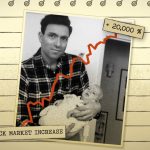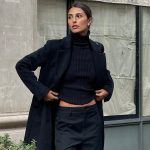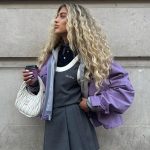In fashion, the expression “more than meets the eye” rings particularly true, especially when it comes to one of fall’s biggest trends: trompe l’oeil.
A French term for “trick the eye,” the optical illusion style is characterized by silhouettes, prints, and other elements that appear as if in 3-D. Think: dresses that superimpose naked figures on the wearer or blazers that use shadows to make it look like there are buttons and pockets where there are none. “It’s almost as if you can step into [the look],” says Darnell-Jamal Lisby, fashion historian and the assistant curator of fashion at the Cleveland Museum of Art. “It’s this experience where you just ask, ‘Is it coming to life? Is it real? Is it coming out of a particular piece of work?”
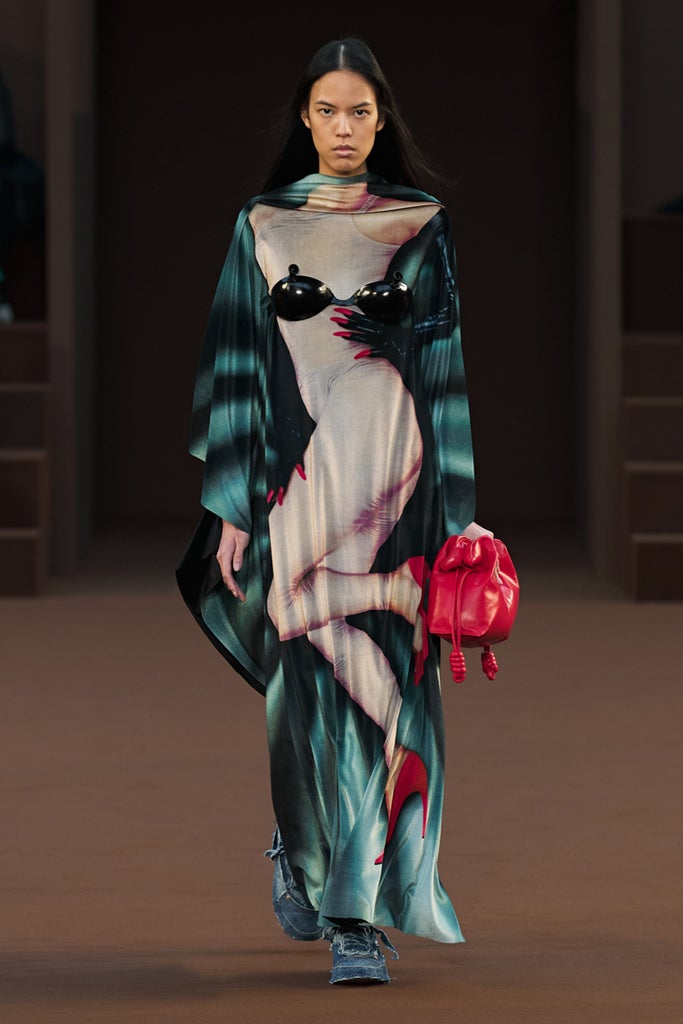
The trippy trend was displayed heavily on the fall 2022 runways: Balmain and Y/Project showed apparel that looked like naked bodies; Loewe included a dress that featured arms that seemed to hug the model; and Schiaparelli’s Daniel Roseberry sent out a jacket with a trompe l’oeil neckline of two faces looking at each other. Celebrities have also embraced the trend’s comeback: Kylie Jenner wore the Balmain body dress to the Billboard Music Awards, Tessa Thompson sported a skirt that tricked the eye into thinking she was wearing a pair of pants from Maison Martin Margiela, and Bella Thorne wore a “naked dress” by Sergio Castaño Peña to the Morbius premiere.

Trompe l’oeil took off almost 100 years ago, thanks to creatives like Elsa Schiaparelli, Jean Cocteau, and Salvador Dalí, who were major figures in the development of surrealism. This cultural movement emerged in response to the social and economic upheaval from World War I and in the aftermath of the Spanish Flu pandemic, resulting in absurdist art that was in direct contrast to real life. It became both an escapist medium and a platform to comment on the political happenings of the time through distorted figures, dream-like scenes, and irreverent juxtapositions. “It was a visual escape for many people,” says Lisby. “It allowed people to dream and imagine [alternate scenarios].”
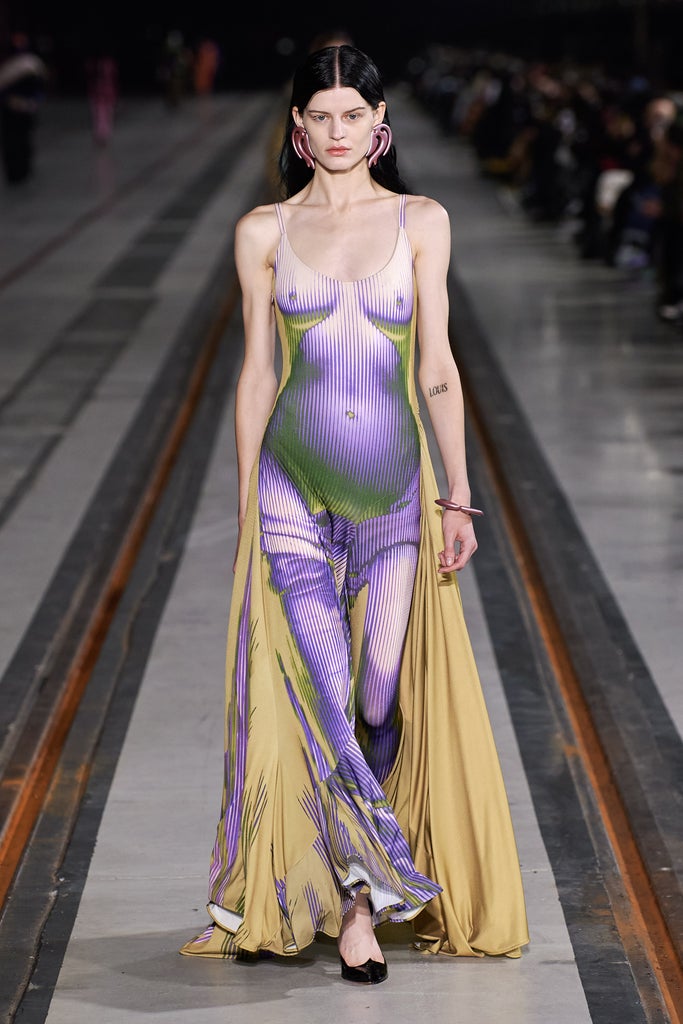
Schiaparelli brought this idea to fashion with pieces like a sweater featuring what looked like a scarf collar; a coat that showed two faces looking at each other, with their silhouettes forming a flower vase from 1937; and gloves with red nail polish. “The idea of creating experiences through fashion, almost like a dream, is the essence of surrealism,” says Lisby. Over time, other designers have adopted trompe l’oeil. Geoffrey Beene designed optical illusion garments during the ‘60s and ‘70s; Jean Paul Gaultier became known for showing naked bodies on his clothing in the ‘90s, and John Galliano applied trompe l’oeil to his work at his namesake label, Dior, and Maison Martin Margiela for the last 30 years.

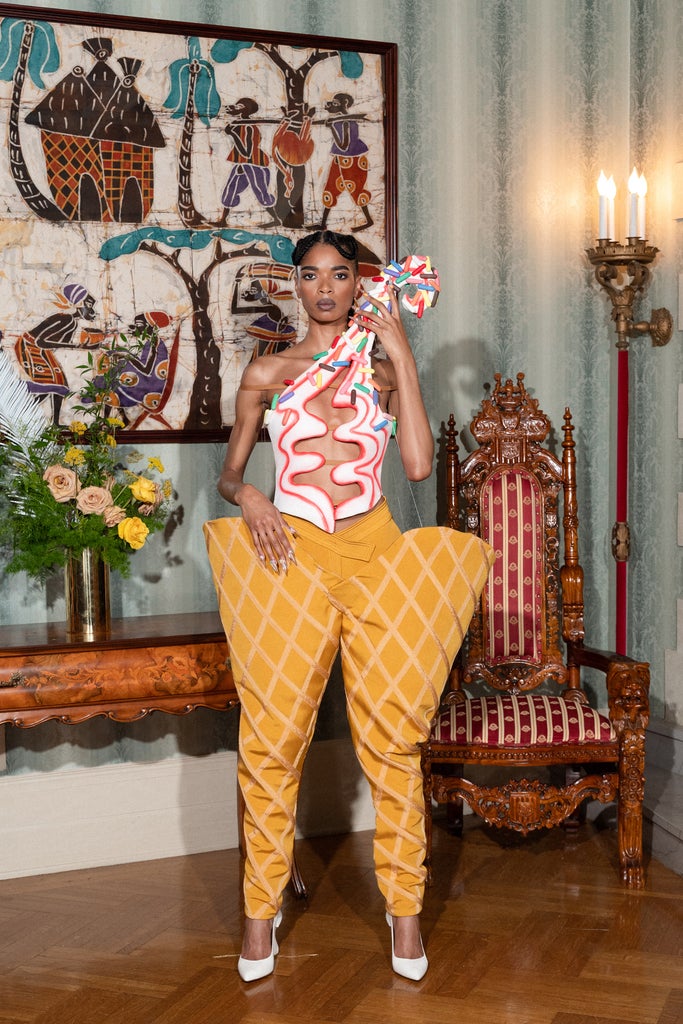
Almost a century after surrealism first emerged, the world is once again witnessing a pandemic and a war, so it’s no surprise fashion designers are once again embracing elements of surrealism: Loewe’s balloon-shaped bras, Prada’s lopsided kitten heels, Moschino’s household objects-inspired collection, Wiederhoeft’s poodle dress, and Pyer Moss’ couture peanut butter jars and ice cream cone creations. In particular, there is renewed interest in Schiaparelli which, at the hands of Roseberry, has returned to its eccentric way with metal breastplates and ear-shaped earrings that nod to the house’s codes. The late designer has also inspired a new exhibition in Paris, titled “Shocking! The Surreal World Of Elsa Schiaparelli.”
“The world around us always affects designers because they’re artists. Designers are just responding to what’s going on at this time and trying to figure out ways to do it using practices that are set in the foundation of fashion,” says Lisby. “It’s asking, ‘Do you want to feel happy and joyful at some point in time? Feel that there’s a world where some joy and peace can really ensue once again and we can all have a certain level of victory?’”
As trompe l’oeil returns in style, it’s time to give fashion a closer look. You never know what you may find.
At Refinery29, we’re here to help you navigate this overwhelming world of stuff. All of our market picks are independently selected and curated by the editorial team. If you buy something we link to on our site, Refinery29 may earn commission.
Like what you see? How about some more R29 goodness, right here?
Cropped Cardigans: A Mini Take On Fall’s Big Trend
Powered by WPeMatico


